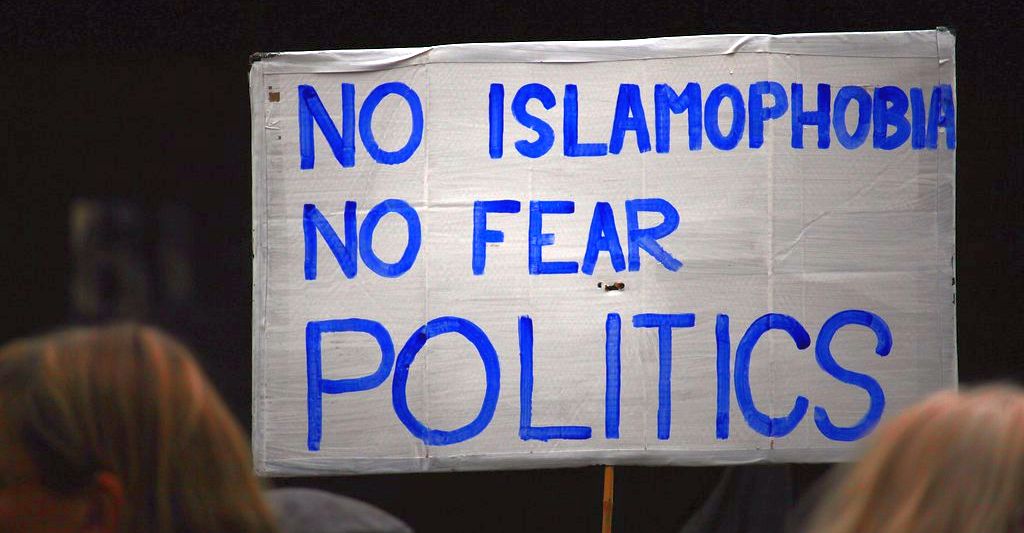On Saturday 27 April, the Canberra Times published an article entitled ‘Push to add soldier to honour roll despite “objections”’. Two days earlier, 35,000 people attended the dawn service at the Australian War Memorial, with other ceremonies around Australia reporting larger crowds than the previous three or four years.
For much of the week, the media had reported on anything vaguely linked to Anzac Day, with sporting codes and their media masters showcasing their Anzac matches, resplendent with military guards of honour, the ‘Last Post’ sounding and the commentators evoking bravery, mateship and sacrifice as rationalisations for large men kicking or throwing balls to each other.
But it’s the piece in the Canberra Times that seems to me to describe the drawing of a line between memorialisation and glorification, a line that some commentators, politicians and pundits are keen to obscure, and just as keen to see us cross.
When I was a child, the small town where I grew up had a march on Anzac Day that began opposite the school, just outside Mrs Brampton’s general store, and up the winding Main Street to a cenotaph near the Council Chambers. From God knows where a single piper, a large man in a kilt and bearskin hat was summoned each year, and led the small march of 20 to 30 people in a ragged line up the closed road.
The numbers were fleshed out by requesting the local scouts, cubs, girl guides and brownies to join in – someone either understood Baden-Powell’s imperialist exercise very well or the promise of some reasonably well-pressed uniforms led to the invite. I can only recall marching once. My father was furious, and was prevented from demanding my withdrawal only by a moment of social insight on my mother’s part.
My father, a tall rangy man, had enlisted three times during the Second World War. Twice he was exposed as under age and sent home. On the third occasion his parents grudgingly signed the papers to allow him to undergo basic training at 17. But before he could be sent overseas, the war ended, and he transferred to Navy Transport in PNG and Solomon Islands waters. His skill as a mechanic allowing his term of service to be cut short. It also most likely exposed him to asbestos; he would die in his fifties of bowel cancer.
My father, uncles and, without exception, all of the men who I knew as a child who had served during the Second World War or the Korean War wanted nothing whatsoever to do with the RSL other than to attend the annual two-up game, if there wasn’t one on offer out the back of one of the town’s three pubs. Their Anzac Day observance was limited to a lot of beer, a lot of bluster, a bit of gambling, and occasionally a moment of silence, which as kids we knew better than to interrupt. If they talked, remembered, lied about their experiences to each other, we didn’t hear it. Certainly not on that day as the kids and wives were largely excluded from anything that was on after the end of the town’s march.
But when we did watch the march, the men were the same faces we saw in the post office, or on the street, or at the servo, men in suits, often ill-fitting, and perhaps with a service medal or two on the breast pocket. No-one in uniform other than the scouts or brownies. No fly-over, no fluttering military pendants, no ‘Last Post’. A moment’s silence at the Cenotaph, with a few home-made wreaths at its base, and sometimes a woman or two quietly crying, remembering a brother or father who didn’t come back, or came back less than whole.
So when I came to read Alan Seymour’s One Day of the Year as a text at high school, I was a bit puzzled by the intensity of both major protagonists: a father almost pathological in his need for commemoration; a son just as insistent in his refusal. The play was written prior to Australia’s dog on the tucker box involvement in Vietnam, and was centred around the almost bacchanalian excesses of returned servicemen on their one day of the year. By the time I came across the play, the Whitlam government had ended both conscription and Australia’s involvement in Vietnam and Anzac Day continued to shrink year after year in terms of the numbers who marched, media coverage and popular culture’s engagement.
And then, well, the weather turned. Centenaries, Olympics, the deaths of the last of the Anzac Cove veterans, and the election of the Little General himself: suddenly, thousands of Howard’s children starting travelling to Turkey for the dawn service, crowds swelled in Australia, and all the while the militarisation of Anzac Day continued apace.
The big events in Canberra and Sydney always did have a strong military tone to them, but over the last ten years or so, Anzac Day has become much more Army, Air Force, Navy Day, almost in the style of those crazy Soviet-era Red Square events. Compare the following, from the Australian War Memorial’s own website:
With the coming of the Second World War, ANZAC Day also served to commemorate the lives of Australians who died in that war. In subsequent years the meaning of the day has been further broadened to include Australians killed in all the military operations in which Australia has been involved.
I watched Australia’s media link Australia’s current military adventurism in Afghanistan (or Operation Slipper, to give it its military name) with the Anzac tradition, rather than remember the thirty-nine service personnel who have died since Deputy Howard’s decision to hitch up with the Yankee sheriff. I watched, too, as military personnel, ordinance and very expensive bits of machinery rolled, flew and boomed across sports fields, down streets, and onto our TV screens.
Current serving officers spoke about how their comrades had brought democracy to Australia, or saved it, or represented it – all the various re-writings of our history, uttered by someone in khaki. Relentlessly, Anzac Day was associated with our current armed forces and the glorification of its own magnificence since the first Sudan campaigns under British command.
Except there’s terrible lie at the heart of this. The people who served in all of Australia’s military engagements til the end of the Vietnam War were overwhelmingly not professional soldiers or armed services personnel. For thousands upon thousands of the men and women who joined up or were conscripted, the time they spent in uniform was a small part of their lives. It may have been, for some, the most momentous, the best, the worst, the cruellest, the most appalling – probably all of those things. But they left here as brothers, fathers, daughters, uncles, sisters, dentists, drovers, clerks, labourers, train drivers, secretaries, teachers and came home to be those things again and more.
Some died; many were injured or wounded. Some recovered, some did not. Some voted Labor, some DLP, some Liberal or Country Party. Some went to church in a Methodist weatherboard chapel with its unlined tin roof, other worshipped in the stone churches of Catholicism, some in a synagogue. They came home, and lived and died with us. They are and were us.
And as much as their war experiences may be unknowable, can we really say those experiences are the only things that define them? That all of the contradictions of being human – of terror, shame, love, anger, cruelty, generosity, care – are to be expunged from the definition of those who should be remembered, until they are nothing more than a caricature of military glorification? Warriors only, brave, sacrificing, bound to endure appalling acts and conditions with only mateship and love of country as their reasons for going on, for enduring, for dying?
On 21 September1946 Joan and Trevor Abbott celebrated the birth of their son Dal at Normanhurst Private Hospital in Ashfield. Twenty-two years later, their son, a conscript sent to Vietnam, died as a private during the Battle of Coral-Balmoral, north east of Saigon. The Abbotts made the decision for Dal’s remains to be buried in the military cemetery for Terendak Garrison at Malacca, Malaysia. They would later request that he not be included in any honour rolls or added to the list of the dead at the War Memorial in Canberra.
For some years, members of 1st Battalion reunion committee have been pushing ‘to right a wrong’ and for Abbott to be added despite ongoing family refusal to approve such a listing. According to the committee’s Garry Prendergast, Abbott’s parents opposed Australia’s involvement in the Vietnam War and conscription, hence their refusal in 1973. It is, according to the committee, a refusal by his parents to acknowledge his sacrifice for his country.
It is claimed that Abbott is the only Australian killed in active service not listed at the AWM. In 1973 the AWM wrote to families to check information, prior to the listing of the Australian dead in Vietnam Abbott’s family then instructed he was not to be included. Apparently the request for permission was very unusual; it has not applied to other conflicts.
Dal Abbott’s parents opposed a war that their son was conscripted to fight in. He died. A child was lost in an enterprise that no amount of rewrites can rationalise. Did this young man die in vain? Yes – and his parents and family have refused to allow that life and death to be simply summed up as a soldier’s end. Dal Abbott was a bloke who at 21 should have been expecting maybe to marry, have kids, just be Dal Abbott for another 50 or 60 years – not to take several rounds to the head while trying to clear a jam on a machine gun during a battle between Australian soldiers and Vietcong fighters.
To refuse to accept that Abbott’s family should have the right, as every family should, to choose how a child is remembered, is, as Steve Gower, AWM director in 2009 said: ‘… high-handed and disrespectful’.
It is just as high-handed and disrespectful is for Anzac Day rhetoric to increasingly pretend that the people who fought our wars were only soldiers. That somehow the soul of Australia dresses in khaki. That the true sons and daughters of ‘our democracy’ all wear slouch hats. That a poorly-planned and executed campaign in the Dardanelles represents the best of the Australian spirit. Each of the men who swam and waded onto the beaches between April 1915 and January 1916 had a sense of themselves that was not limited to simply being a soldier. They carried a life, memories, hopes, illusions, understandings that were not bound by the barrel of a gun.
They were us, and we are them. Lest we forget.






